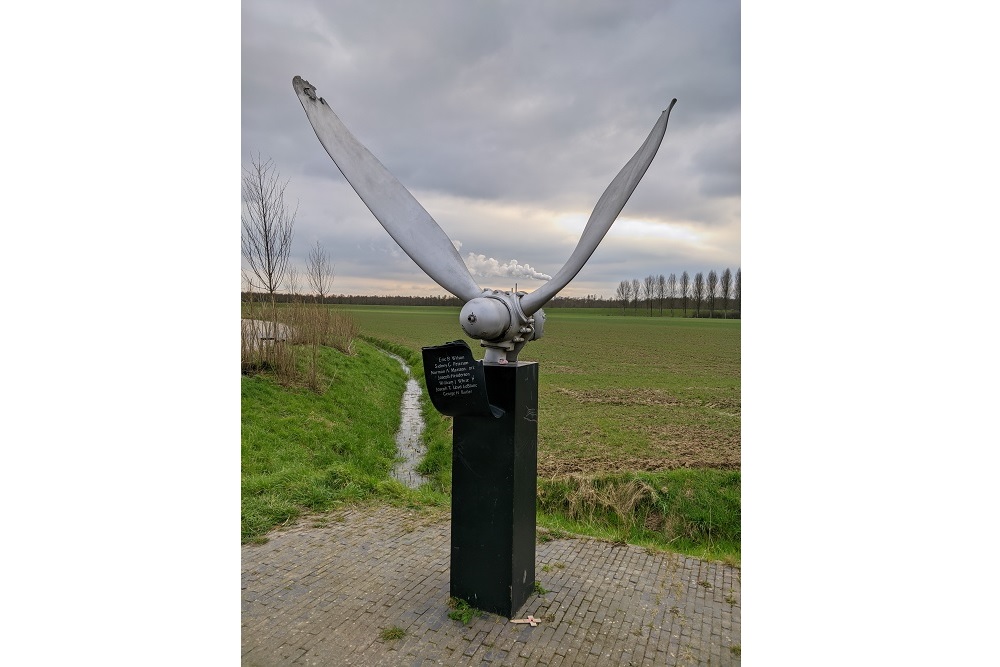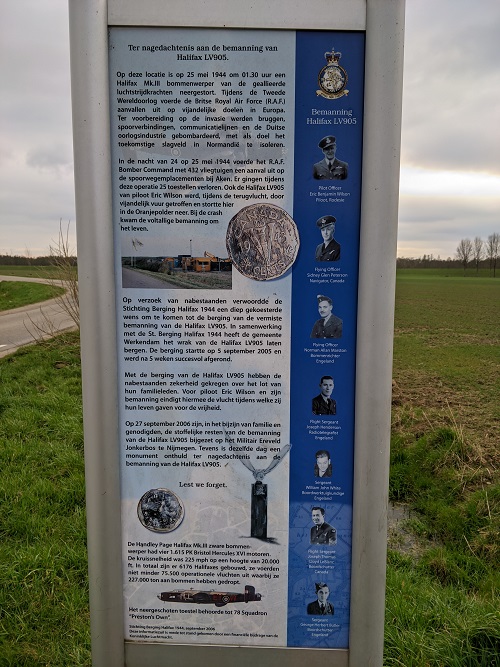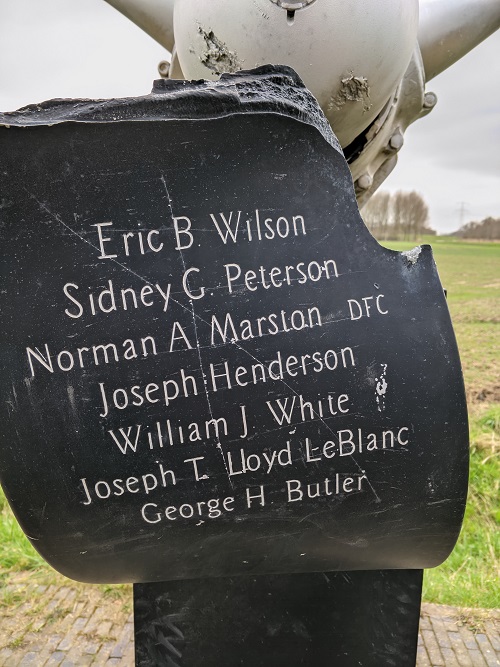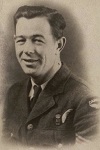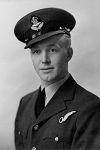Memorial Halifax LV905
The Halifax LV905 MK III, a bomber of the British Royal Air Force (RAF), crashed in the night of 24-25 May 1944 in the Oranjepolder near Hank in Brabant (now part of the municipality of Werkendam). The aircraft was part of an armada of 432 aircraft for a raid on a railway yard near Aachen, Germany.
On the way back to England the Halifax was shot down by a German night fighter of the Messerschmitt type. All seven crew members from England, Canada, South Africa and Rhodesia (now Zimbabwe) of the aircraft were killed. Two remains were recovered after the crash, one of whom could be identified. It was rear gunner Sergeant George Hurbert Butler. He and the other recovered victim have been buried for some time in the Jonkerbos honorary cemetery in Nijmegen. Although the other five crew members were also formally given a grave at Jonkerbos at the time, before the start of the salvage it was assumed that their remains were still in or around the wreck. This suspicion turned out to be correct. After the aircraft was recovered, more than 60 years after it crashed, the remains were interred at the graves in Jonkerbos War Cemetery.
The Halifax LV905 crew consisted of war volunteers from England and Canada. They were good friends who had already gained the necessary experience. They renamed their aircraft "Willy". This may be the nickname of the pilot Wilson. This nickname can also be a derivative of the code EY-W, the device code. This was her 21st mission for this crew.
The memorial in Hank stands on the site where the plane crashed and commemorates the killed crew.
Do you have more information about this location? Inform us!
Source
- Text: Gemeente Werkendam
- Photos: Frank Overman (1, 2, 3), Fedor de Vries (4, 5)
Nearby
Museum
Point of interest
- War Damage Buitenkade 5 - Hank
- Fort St. Gertrudes Geertruidenberg - Geertruidenberg
- Shelters World War II Geertruidenberg - Geertruidenberg
Monument
- War Memorial Hank - Hank
- Bridge of Sint Jan & Memorial Drimmelen - Drimmelen
- Memorial Line-crossers - Hank
Cemetery
- Dutch War Grave Roman Catholic Cemetery Hank - Hank
- Dutch War Graves General Cemetery Geertruidenberg - Geertruidenberg
- Dutch War Graves Raamsdonksveer - Raamsdonksveer
Remembrance Stone
- Stumbling Stones Markt 37 - Geertruidenberg
- Stumbling Stone Papenstraat 2 - Geertruidenberg
- Stumbling Stones Stationsweg 5 - Geertruidenberg
Fortification
- Former Powder Magazine Geertruidenberg - Geertruidenberg
- Fort Lunette Raamsdonksveer - Raamsdonksveer
- Trenches Walls Geertruidenberg - Geertruidenberg
